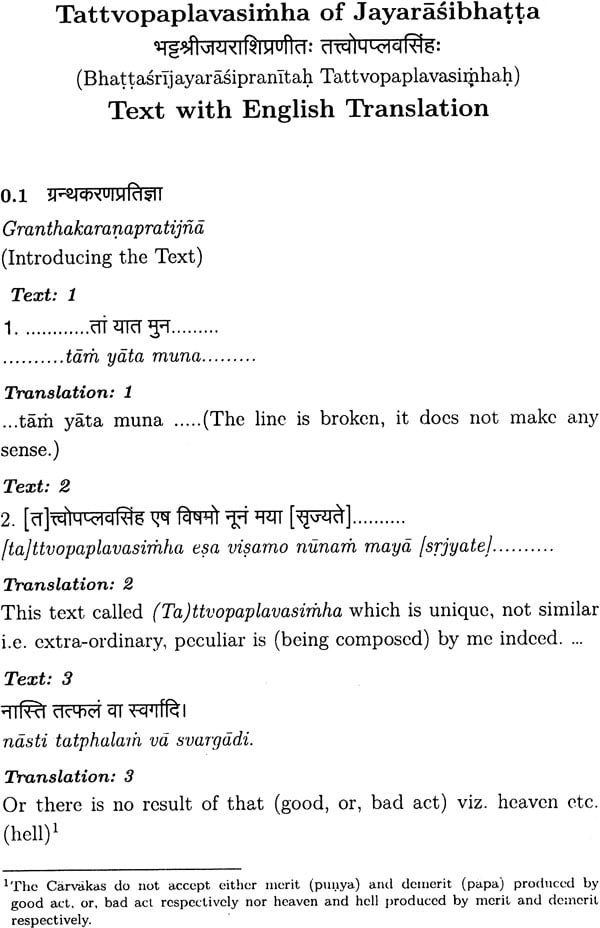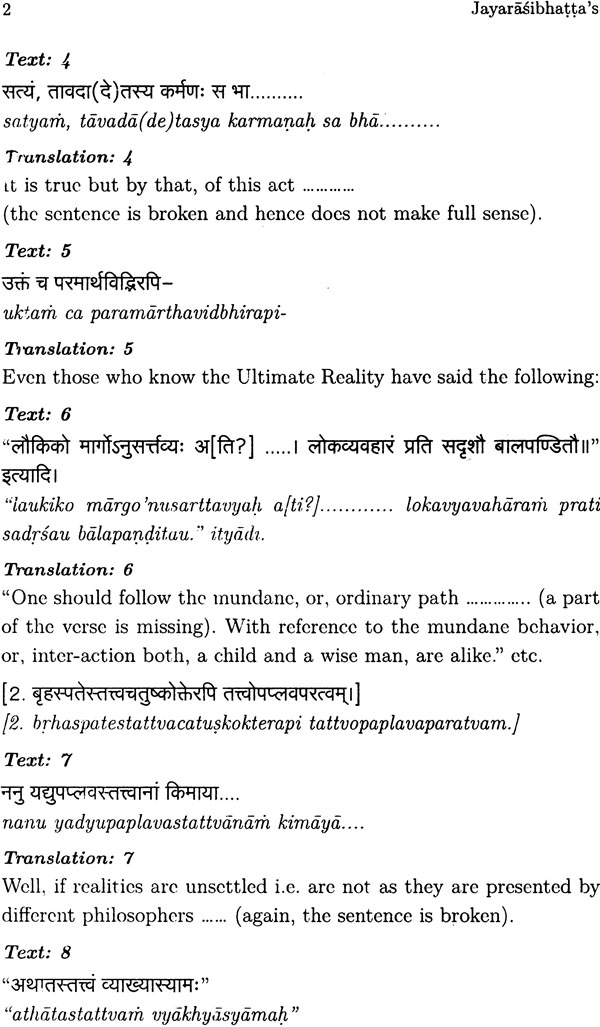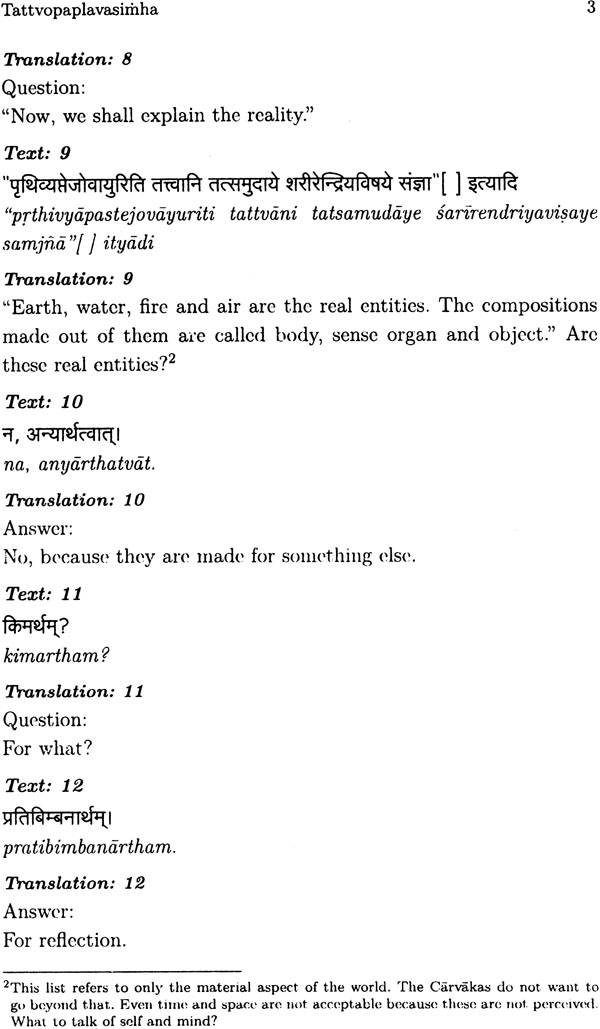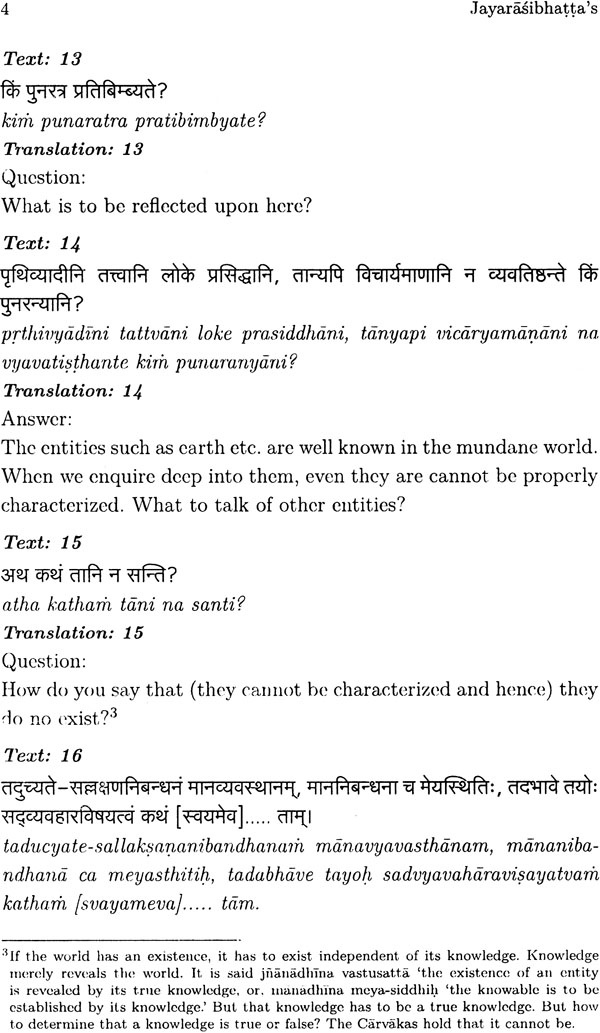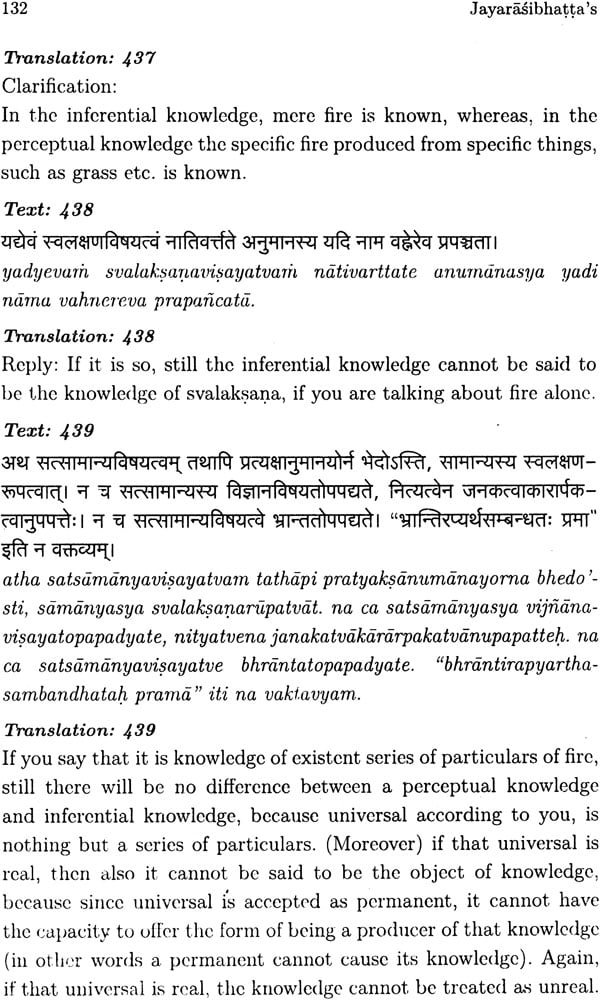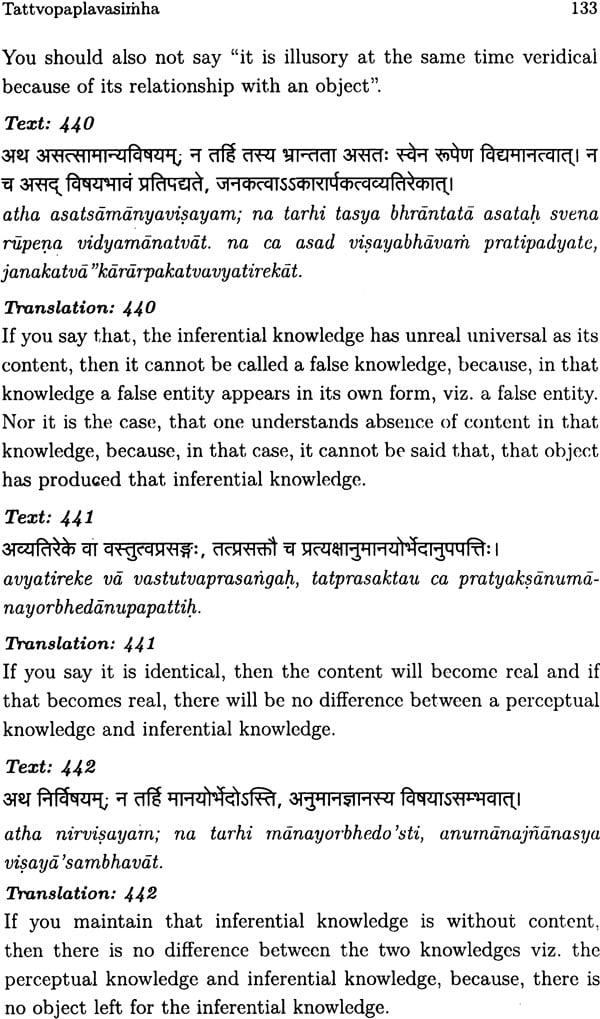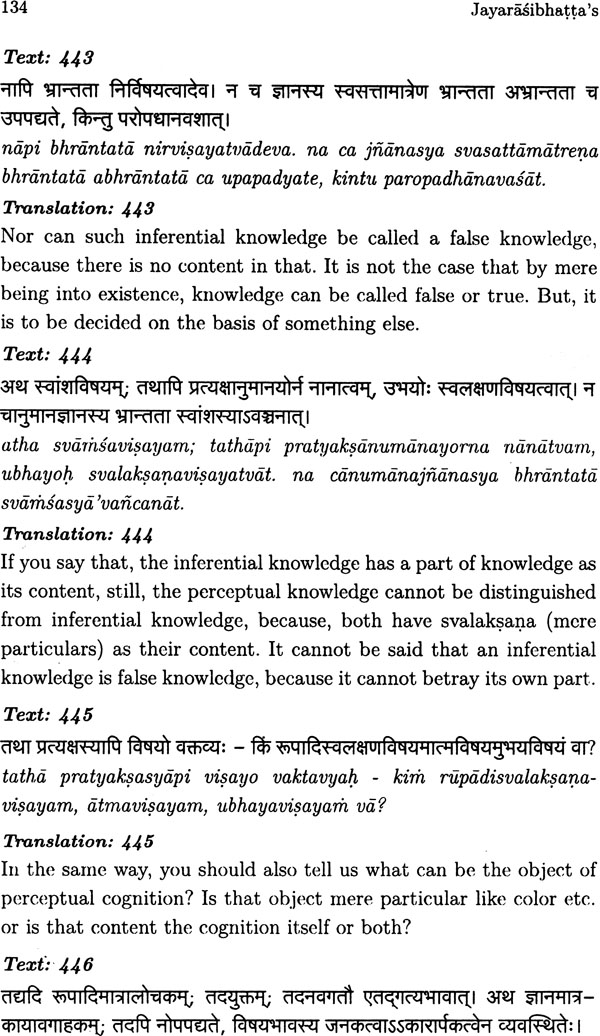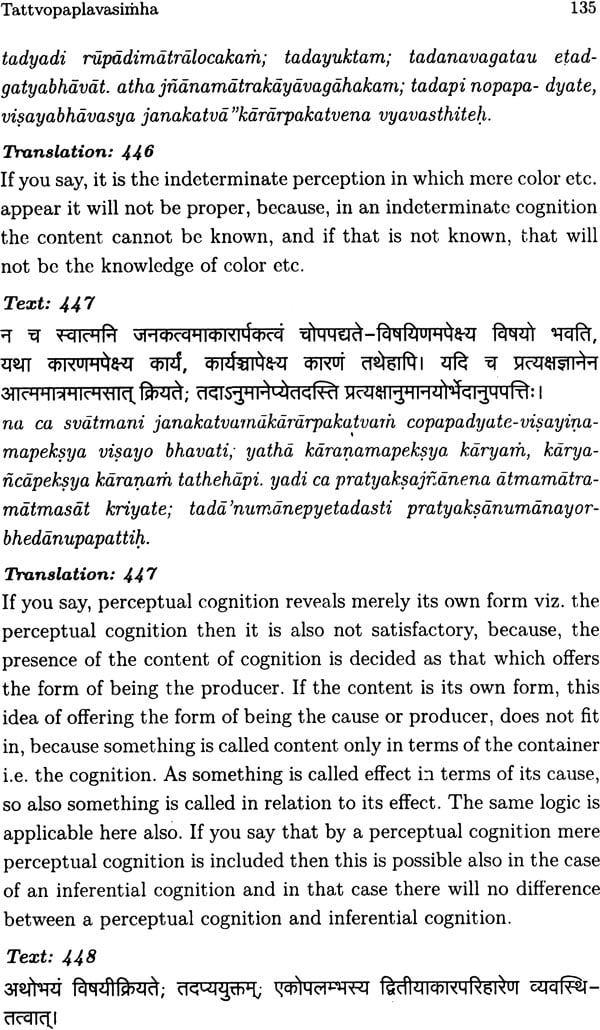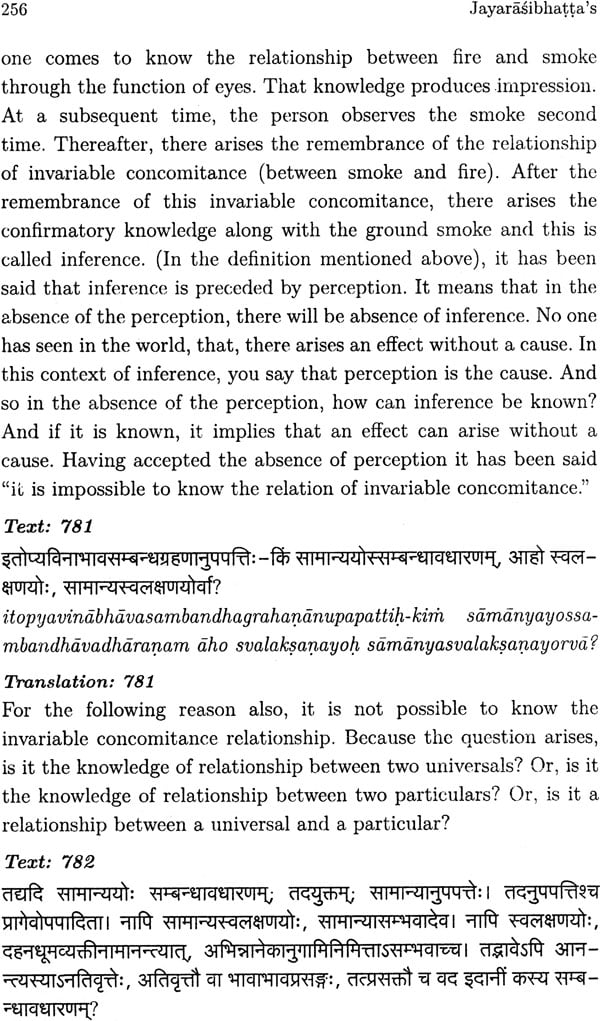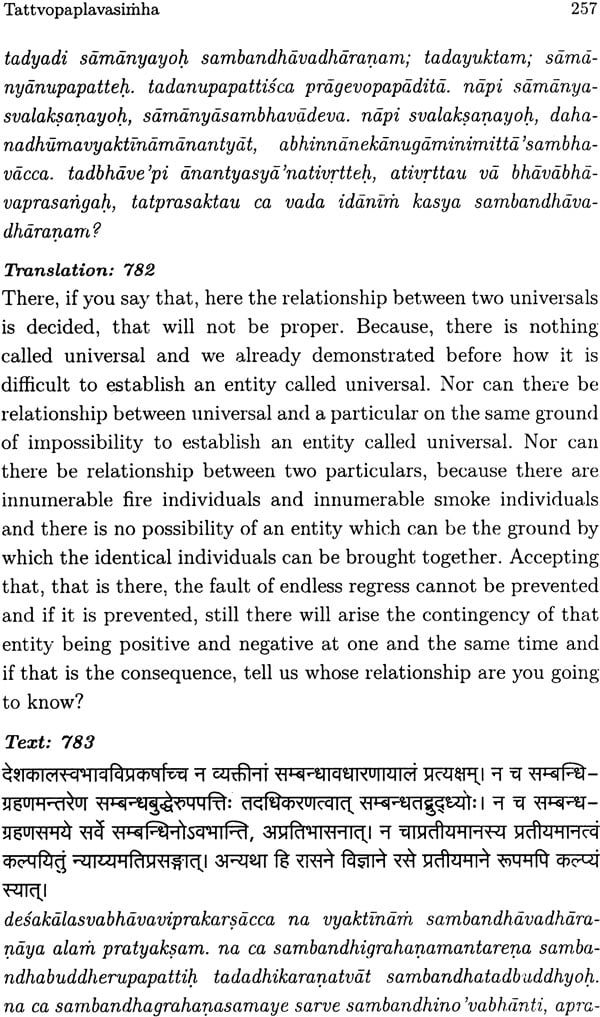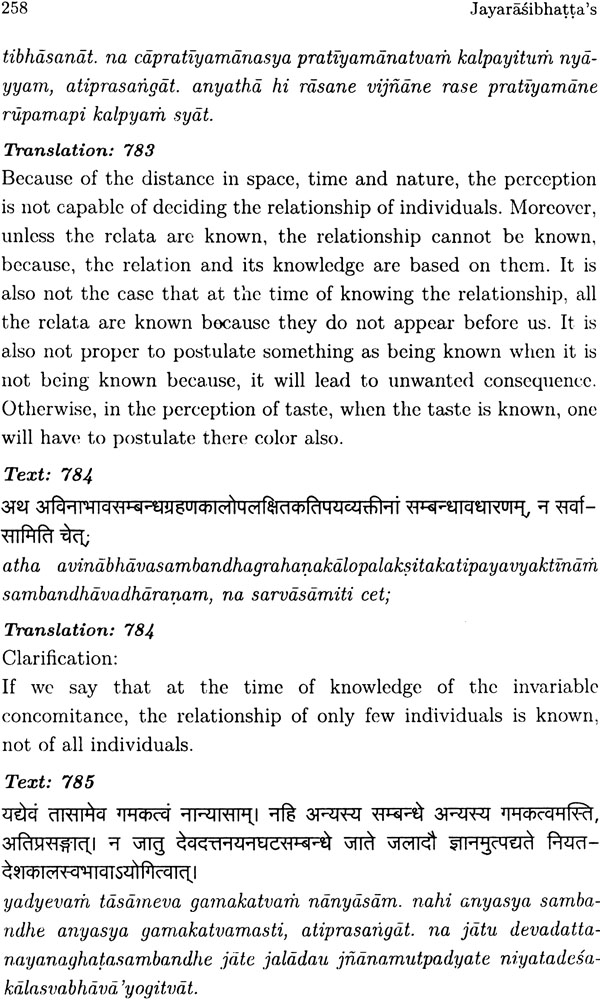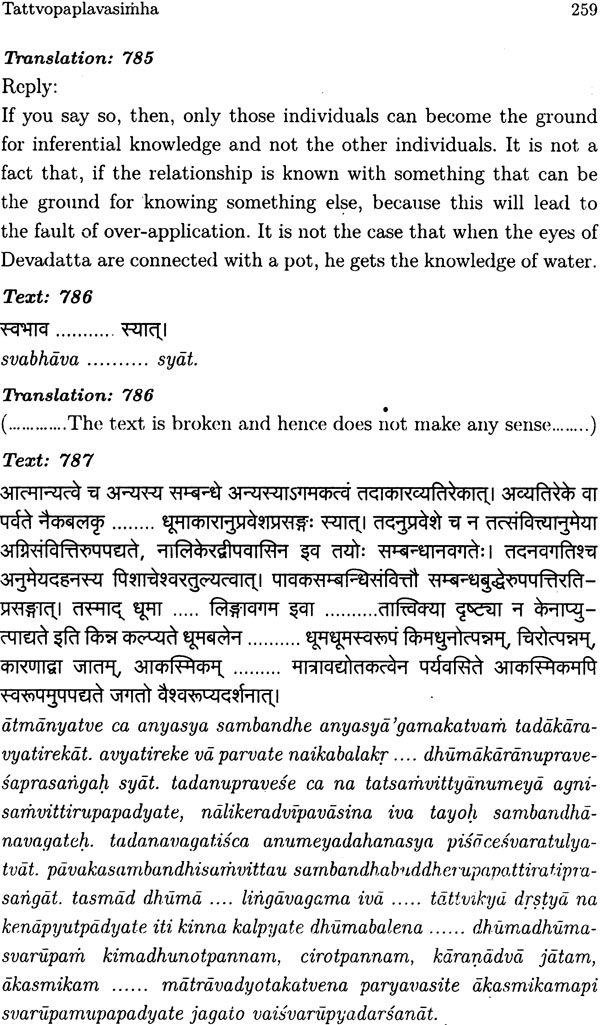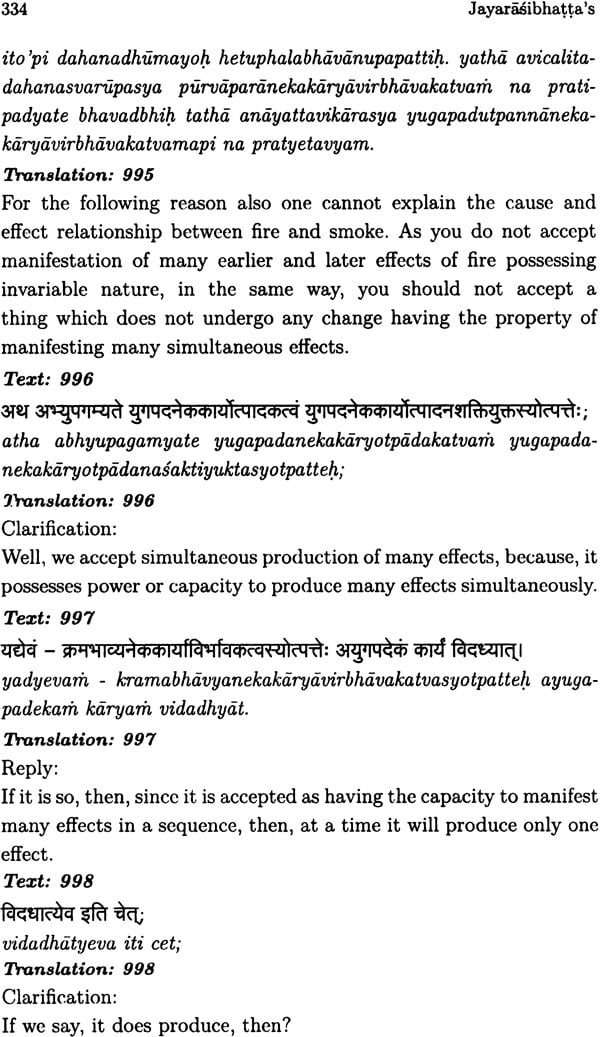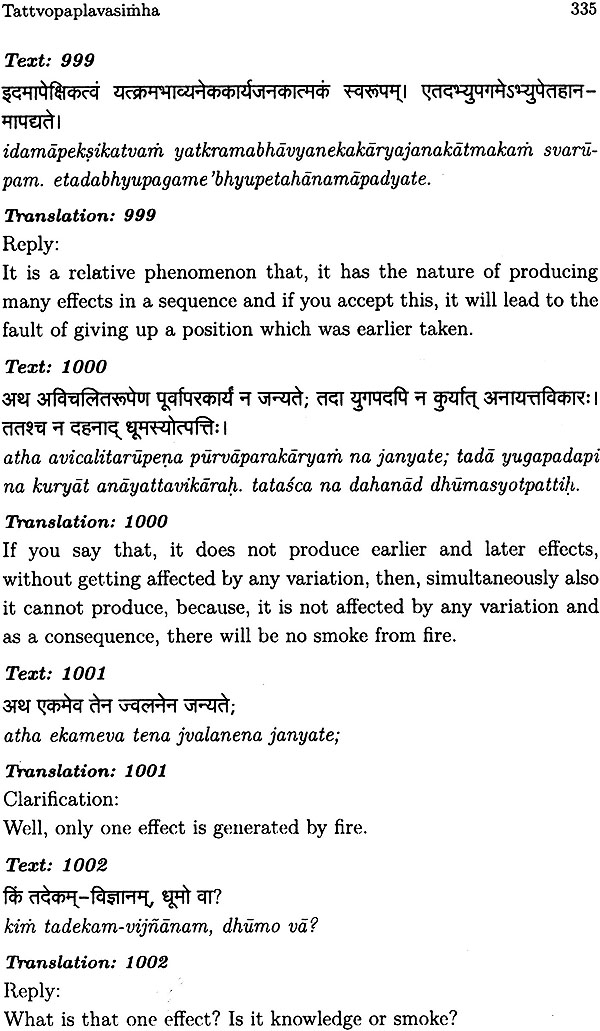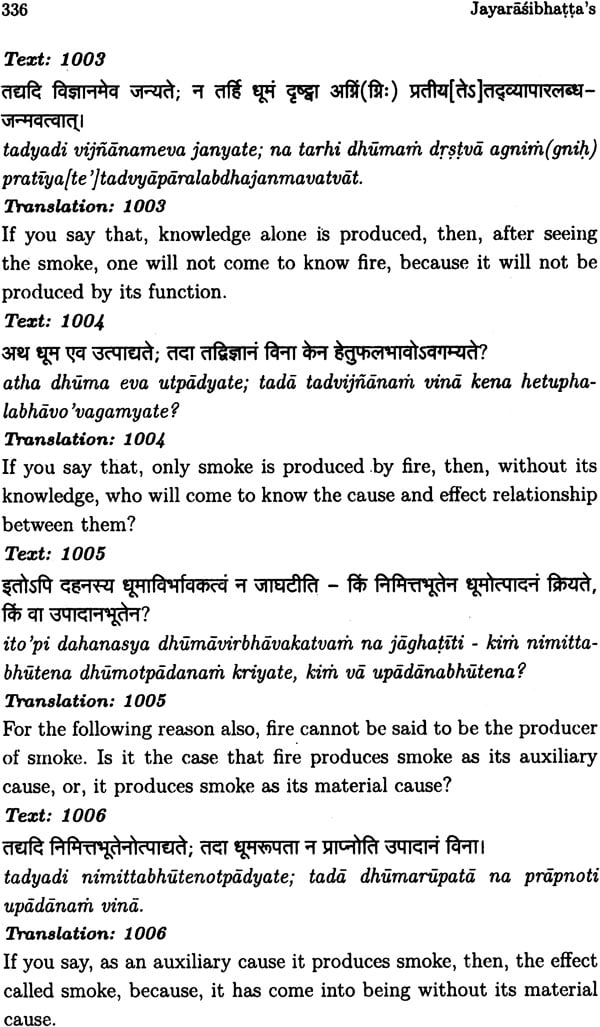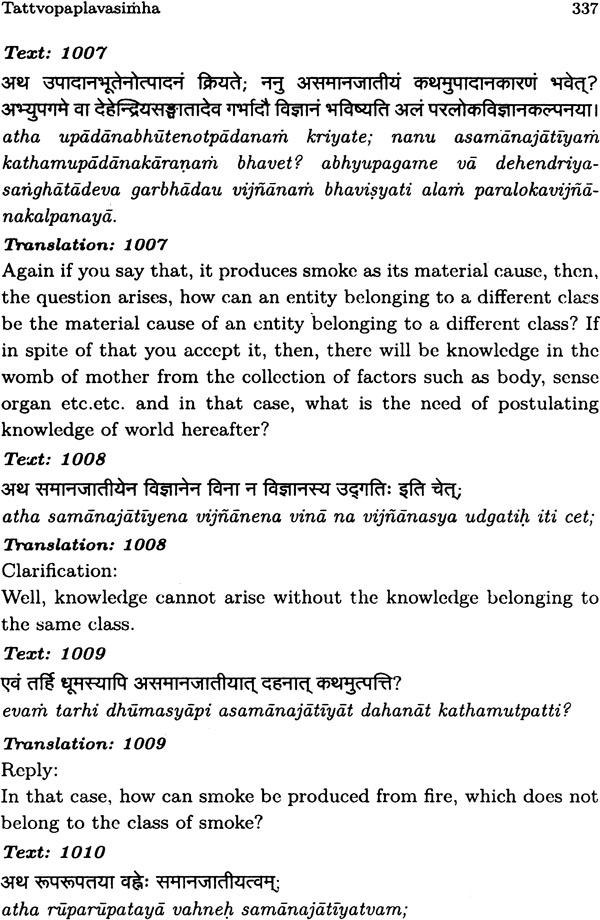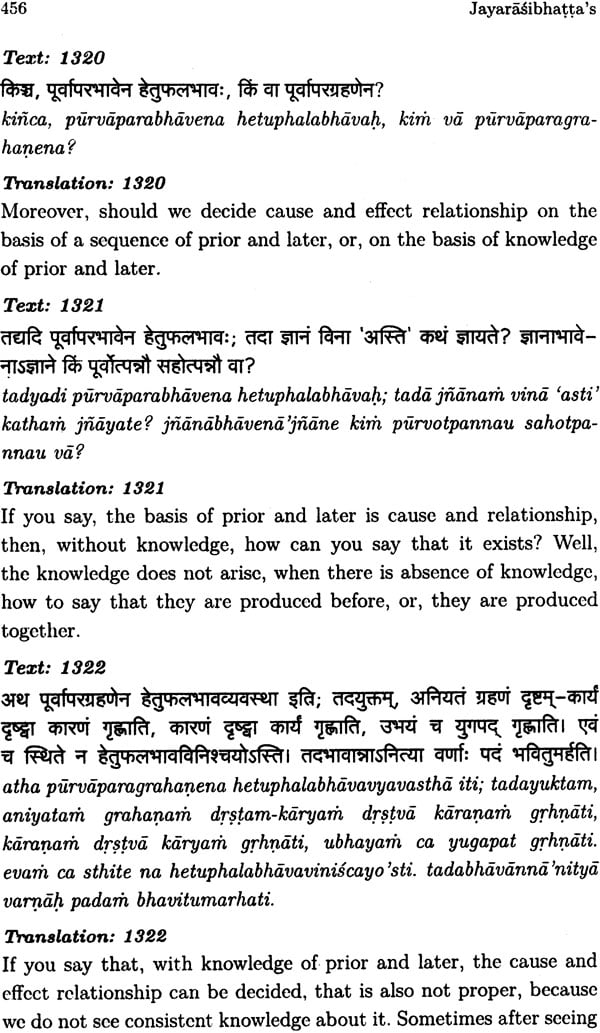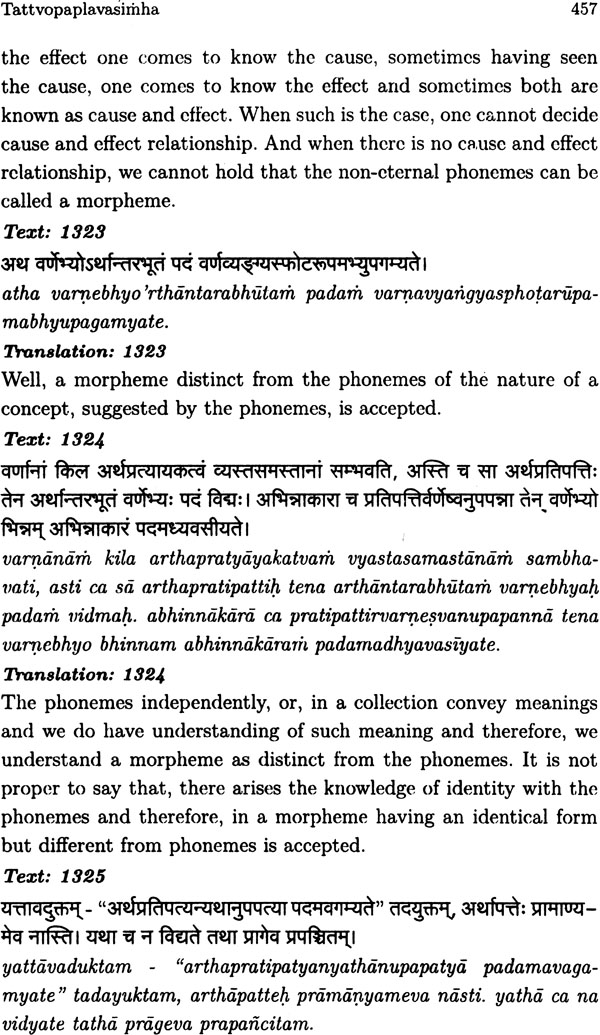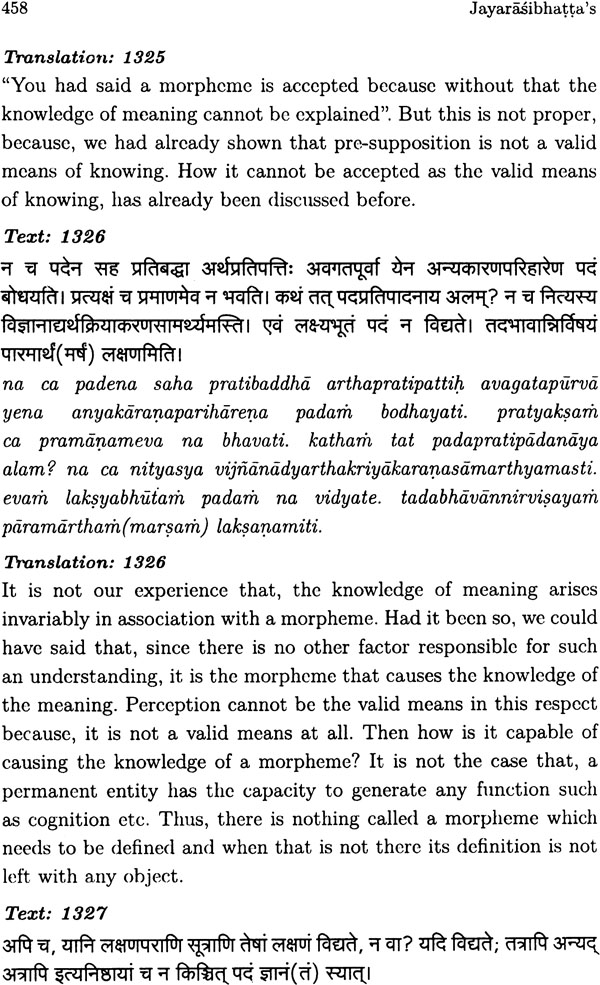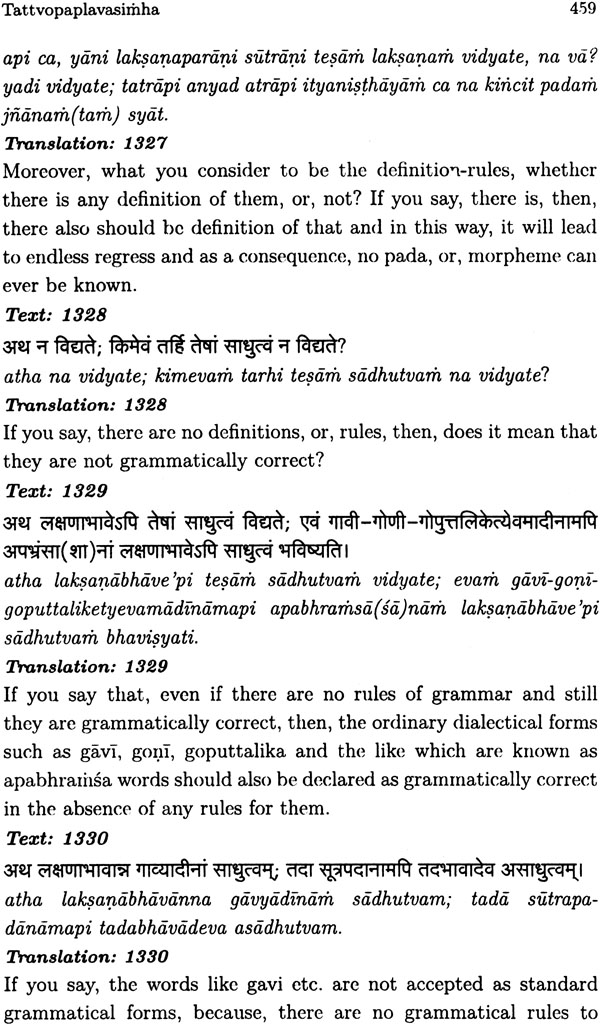
Tattvopaplavamsimha of Jayarasibhatta (Sasnkrit Text With Transliteration and English Translation)
Book Specification
| Item Code: | NAF164 |
| Author: | V.N Jha |
| Publisher: | CHINMAYA INTERNATIONAL FOUNDATION |
| Language: | Sasnkrit Text With Transliteration and English Translation |
| Edition: | 2013 |
| ISBN: | 9789380864112 |
| Pages: | 492 |
| Cover: | Hardcover |
| Other Details | 9.5 inch x 6.5 inch |
| Weight | 920 gm |
Book Description
Prof. V.N. Jha (b.1946), is an eminent scholar and specialist of various branches of Sanskrit learning. All along his life he has been trying to promote Sanskrit studies through multi disciplinary approaches in order to make such studies relevant to contemporary world and knowledge domains. He created new disciplines of study in Sanskrit. He has contributed over 45 book and over 100 articles. So many student received Ph.D degree under his supervision. He is member of a number of national and international academic institutions. He held the position of professor and director of centre for Advanced study in Sanskrit university of pune for 20 years. He was also the founding chairman of the special centre for Sanskrit studies Jawaharlal Nehru university new Delhi. In popularizing Nyaya, Mimamsa and Vyakarana sastras through teaching of graded courses developed by him.
Jayarasi Bhatta most probably flourished in between the later part of the 8th century AD and the earlier part of the 9th century AD (ca. 770-830) in southern India. He was a philosopher a skeptic loosely affiliated to the materialist Carvaka/Lokayata school of thought. He is the author of one of the most extraordinary philosophical works in India the Tattvopaplavasimha (The Lion of the Dissolution of all categories) its palm leaf manuscript was discovered in 1926 in a manuscript library at Sanghavia panado Bhandar Patan by Sukhlaji Samghavi and Bechardas Dosi. The text was brought to light in 1941 by them they assigned 8th century AD as the date of the text. This date was slightly modified by Suklalji sanghavi who placed Jayarasi Tattvopaplavasimha between 725 and 825 AD which in turn is accepted by Eli franco (1987: 12-13). However in the Preface to the second edition of 1994 the date of Jayarasi Bhatta was modified as 770-830 AD.
Carvaka also known as Lokayata is a system of Indian philosophy that assumes various forms of philosophical skepticism and religious indifference. It is named after its founder Carvaka the author of the Barhasaptya sutra which is not available today except some quotations here and there.
The present text of Tattvopaplavasimha is often regarded as belonging to the Carvakas school, which would make it the only extant authentic text of that schools.
The Tattvopaplavasimha reflects on various epistemological theories offered by various schools of thought. He critically examines a number of definitions of pramanas (Process of knowing) accepted by various Indian schools of thought and Proves that none of them are sufficient for establishing knowledge. Inference relies on inductive reasoning which cannot be shown to be universal premises. Testimony requires the reliability of the witness which must be establish by another the Pramana. Even direct perception cannot be established as true because it cannot be distinguished form an erroneous cognition. Therefore Jayarasi argues that none of the source of knowledge is valid and hence nothing can be known for certain. Jayarasi also challenged the astika establishment belief in supernatural beings by attacking their epistemology with different arguments in a Vaitandika style. One can find free use of epistemological terminology prevalent at the time of Jayarasi in this text.
Prof. V. N . Jha, a renowned scholar of Veda, Vyakarana, Nyaya, and Mimamsa, and the Former Director, Centre of Advanced Study in Sanskrit, University of Pune, has translated this text into lucid English. He has arranged the entire text in a dialogue form and has translated it in such a way that the arguments become clearer and the reading of the translation becomes quite enjoyable. For translating, he has taken the text of Baudhabharati, Varanasi edition, 1987 of Pt. Sukhlalji Sanghavi and Rasiklal Parikhji. In this edition, at several places, the Sanskrit text is broken and those sentences do not convey any sense. Hence, Prof. Jha preferred to leave them without translation with a hope, perhaps, that in future a better manuscript of the text may be unearthed.
The present book consists of an introduction and a detailed analysis of the content of the text, over and above, the Sanskrit text in Devanagari along with its roman transliteration and English translation. At the end, an index of all technical terms used in the text has been appended, which, I believe, will be very much useful to the readers. It is a great pleasure for the Chinmaya International Foundation Shodha Sansthan to bring out this work for readers and scholars of Philosophy. I am very grateful to Prof. Jha for allowing our Shodha Sansthan to publish this work which is of great historical importance. I am thankful to all my colleagues for carrying out all necessary works connected with the publication of this volume. We are very much grateful to Rashtriya Sanskrit Sansthan, New Delhi, for the financial assistance, especially to Prof. Radha Vallabha Tripathiji, the Vice-Chancellor, for his kind support and advice. My sincere thanks to Prof. K. G. Paulose, Chairman, CIFSS for his kind support and guidance. At last, I pray Pujya Gurudev and the almighty God for their blessings.
The Taituopaplauasimha is the work written in the style of vitanda.
The Author of the Text
At the end of the book it is written that this work called Tattuopaplauasimha is composed by Jayarasi Bhatta. Beyond this nothing is known about the author.
Time of the Author
About the time of the author also nothing is certain. Looking at the internal evidence, we do find reference to Kumarila, Prabhakara and Dharmakirti in this text and so the upper limit may be fixed as 750 AD. Similarly, Tattuopaplavasimha along with its author's name Jayarasi is quoted in the Astasahasriof Vidyananda, a Jain scholar of 810 to R7:i AD. On this ground Pdt. Shri Sukhalalji Sanghvi thinks that Jayarasi Bhatta might have flourished before 725 AD (Cf. Hindi Introduction of Varanasi Edn.).
History of the Text
The Tattvopaplavasimha was published for the first time in the year 1940 in the Gaekwad Oriental Series (No.87). This was edited by Pdt. Shri Sukhalalji Sanghvi and Prof. Rasiklal Parikh. That edition of this work along with the Hindi introduction of Pdt. Shri Sukhalalji Sanghvi was published separately by Swami Dwarakanatha Shastri in the Bauddhabharati Series no. 20 from Varanasi in the year 1987.
Form of the Text
The Tattuopaplavasimha may be regarded as a work belonging to the category of vitand-grantha, In a vitanda-grantha the main aim of the author remains to show how the others' views are wrong and untenable without stating the author's own views. Here too we find that Jayarasi has criticized positions of all the three traditions of Vedic, Jaina and Bauddha philosophy on the concept of pramana and prameya. In the Vedic traditions too, he has specially engaged the doctrines of Nyaya, Sankhya, Mimamsa, Vedanta and Vyakarana and refuted thorn. He refers to the Jainas as Digambaras and refutes their stands. Among the Buddhists he takes on Dhamakirti and his vijnana-vada-followers and refutes their theories. He equally find it difficult to agree with the language philosopher Bharathari and ultimately him also.
This simply shows the versatile scholarship of Jayarasi. He demonstrates equal command on all the systems of Indian philosophy. Ultimately he demonstrates that no doctrine is logically tenable with regard to concept of Pramana (the process of knowing) and prameya (object of a true cognition) what is considered to be truth can never be established through any definition. Therefore there is nothing called truth (tattva) or real as proposed by philosophers of various systems. He takes a pride even in saying that he has excelled ever Brhaspati the great teacher of the Carvaka school of thought so far the creation of doubts is concerned. The Carvaksa seem to have accepted only one pramana called perception and the four mahabhutas namely earth, water, fire, and wind. Jayarasi demolishes this position also. Thus, although one may get an impression initially that Jayarasi is the follower of the carvaka school, one will be disillusioned once one completes the reading of the text carefully. This justifies the name of the text as Tattvopaplavasimha (lion who ransacks all the believed form of any systems of thought). He says at the end of this work that something appears to be true only as long as it is not critically examined. In this words:
Application of the Form
This text provides training as how to frame questions in such a way with a number of alternatives (Vikalpa) that it becomes difficult for the opponents to take a particular position. Gautama mentions there types of discourse (Katha) in his Nyayasutra 1.1.1 they are vada, jalpa and vitanda. Vada is a form of a discourse which aims at discovering the truth. Jalpa is that dialogue which involves twisting arguments. Vitanda on the other dialogue which involves twisting arguments. Vitanda on the other hand is the form of discourse where the proponent is interested only in showing how the opponents stand is not tenable and hence wrong without, however, Providing any alternative view-point. Gautama defines it as follows:
Sva-pratipaka-sthapanahino vitanda (Nyayasutra 1.2.3) A discourse in which the proponent neither agree with the view of the opponent nor establishes his own view. Jayarasi Tattvopaplavasimha belong to this category of discourse.
Content of the Text
The plan of work of Jayarasi seems to be the following:
Since the reality of any thing is claimed on the baiss of pramana, it is better to challenge the very concepts of pramana held by different system of philosophy. Thus when the basis or ground to calim something real or existent is demolished the reality of those accepted prameyas gets automatically refuted.
Jayarasi has challenged and refuted the general and particular definitions of Pramana of Nyaya Mimamsa and Baudha philosopher. He also refute the particular definition of pramana as offered by Nyaya Mimamsa, Sankjya, Bauddha, Pauranikas and the Vajyakarana thinkers. While he refuted the definitions of all the four pramanas as developed by Gautama, Jayarasi seems to have refuted the definition of perception of Sankhya but those of perception and inference of the Buddhists. Jayarasi discussed all the six pramanas accepted by the Mimamsa system and pointed out their limitation. The aitihya and the sambhahva pramansa of the Pauranikas have also been criticized in this text, there is comprehensive criticism of the concepts of Vacaka-pada and Sadhu pada as desired by the grammarians.
The following are some of the concepts which Jayarsi has particularly discussed:
1. jati (universal of generic property)
2. samavaya (inherence relation)
3. alambana (object of knowledge)
4. atathaya (falsity)
5. tathyata (Validity)
6. smriti-pramosa (erasing of remembrance)
7. sannikarsa (sense-organ-object-contact)
8. visayadvaividhya (classifying objects into tow category)
9. kalpana (imagination)
10. aspastata (haziness)
11. santana (series)
12. hetu-phalabhava (cause-and-effect-relationship)
13. atman (self)
14. kaivalya (pure state without attributes)
15. anekanta (multi-dimensional perspectives)
16. avayavin (whole)
17. bahyartha-vilopa (denial of external world)
18. ksanabhanga (refutation of the theory of series)
19. nirhetukavinasa (destruction without cause)
20. varna (phoneme)
21. pada (morpheme)
22. sphota (conceptual form)
23. apauruseyatva (non-human agency)
Jayarasi has very cleaverly discussed and refuted these concepts. It is a fact that all system of Indian philosophy do no accepted all these concepts and while rejecting any of these concepts each system of thought offer a set of arguments. Jayarasi equipped himself with these sets of argument for refuting a particular concept and made use of one set of arguments at his convenience. For instance concepts accepts by the Naiyayikas, like jati, samavaya, avayavin and atman, are not acceptable to the Buddhist and the Buddhists developed a set of argument to refute them. Jayarasi adopts these argument of the Buddhist to refute the Naiyaikas and vice-a-versa.
English Translation
I have translated the text as it appears in the Varanasi edition. In this text it appear that in editor have followed certain principle of editing. According to which whatever is found in the manuscript has been unchanged in the running text and whatever has been added by the editor is kept in the brackets. If the addition is of the nature of correction in the text, the corrected form of the text has been kept in the first bracket ‘(); similarly if the editors have suggested some missing from of the that has been kept in the third bracket ‘[]’, and the broken text or corrupted text which does not convey any sense has been put into the second bracket ‘{}’. I have not disturbed this policy of the editors.
I have arranged the text in a dialogue form. While translating the text I have tired to make the translation readable without however losing the content. Wherever in could not make any sense of some text I have put question mark (?) in the brackets. As several places the Sanskrit text is broken and so while translating I had to keep is blank.
| Benediction | VI |
| Preface | VII |
| Acknowledgment | IX |
| Introduction | 1 |
